Extend Your Reach with This Proven Content Strategy Model
Written by David L Hicks – October 23rd, 2025
Do you ever feel like you’re just throwing content out there? You write a blog post, post on social media, and maybe even film a video. However, there’s no real connection between any of it, and you’re unsure if it’s working. This chaotic approach is exactly why you need a content strategy model.
Having a plan changes everything. A content strategy model acts as your roadmap, guiding every piece of content you create. It gives you purpose and a clear direction
Table of Contents
ToggleWhat is a Content Strategy Model?
Think of it as the blueprint for your entire content operation. It’s much more than a simple content calendar that just tells you what to post and when. It’s the high-level thinking behind the action.
This model documents your key business goals and then outlines how your content will help you achieve them. It answers the big questions. Who are you trying to reach with your content marketing framework? What message do you want to send them?
Without a defined model, you waste time and money creating content that goes nowhere. With one, every article, video, and social media post has a specific job. This structure brings clarity and focus to your marketing efforts.
The Core Components of a Good Content Strategy
Every solid plan is built on a few key pillars. Before you can choose a model, you have to get these foundational elements right. They are the building blocks of a system that works for your strategic goals.
Audience Persona
You have to know who you’re talking to, and I mean a real grasp of who you are talking to. An audience persona is a detailed profile of your ideal customer, created through audience research.
What are their biggest challenges and pain points? What questions keep them up at night? Research from sources like HubSpot suggests that thoroughly researched personas can significantly enhance the effectiveness of your marketing efforts. Your content should address their needs, motivations, and goals directly.
To build a persona, you can use analytics data from your website, conduct customer surveys, and interview members of your sales team. Combine demographic information, such as age and location, with psychographic details, including values and interests. The more detailed you are, the better you can serve them.
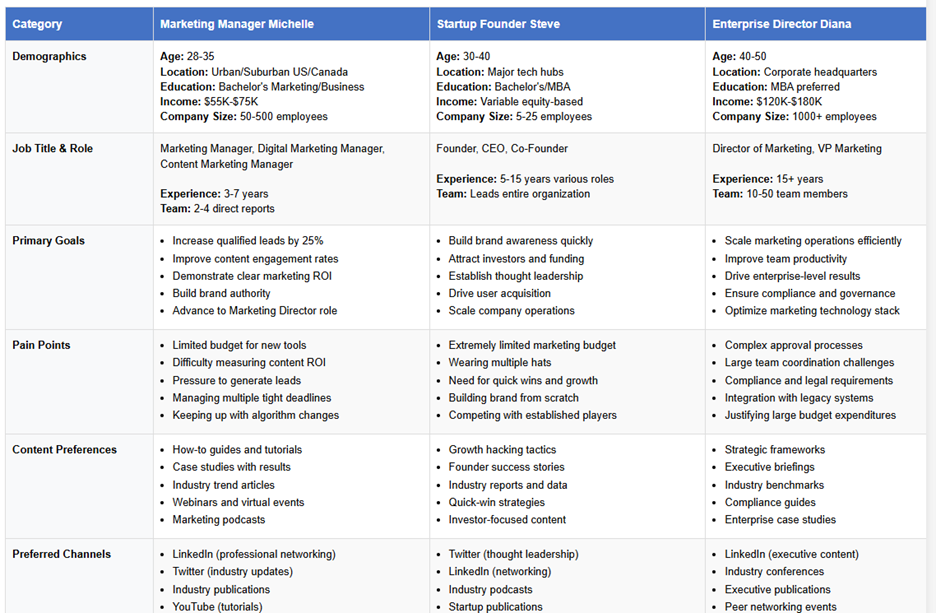
Brand Positioning & Voice
What makes your business different from all the others? Your brand positioning is that special space you own in the customer’s mind. Once you know what that is, you can define your brand voice.
Are you witty and informal? Or are you more authoritative and professional? Whatever you choose, you must be consistent across all your content to build brand recognition.
A consistent voice builds trust and makes your brand feel familiar and approachable. Document your voice and tone guidelines, including specific words to use or avoid. Documenting your voice helps anyone creating content for your brand stay on the same page.
Content Pillars & Topics
You cannot be everything to everyone. Content pillars are the 3 to 5 big topics your brand will be known for. These are the subjects you can talk about with authority and credibility.
From these pillar pages, you can brainstorm an endless number of specific content ideas and topic clusters. This approach keeps your content focused and relevant. It also helps you establish topical authority in the eyes of search engines, which is a significant factor in achieving a high ranking.

Your content pillars should sit at the intersection of what your audience cares about and what your business offers. This alignment confirms your content serves both your customers’ needs and your business objectives. Aligning business objectives is a crucial component of a robust content planning process.
Formats & Channels
Where does your audience spend their time online? The answer tells you which channels to focus on, whether it’s Instagram, LinkedIn, or your own blog. Your content formats depend on these channels and what resonates there.
Some ideas work best as a short video for social media. Others need a long, detailed blog post to thoroughly explain a topic. The key is to match the content format to the platform and your audience’s preferences for consumption. A content distribution plan will help you match your content to the three primary distribution channels.
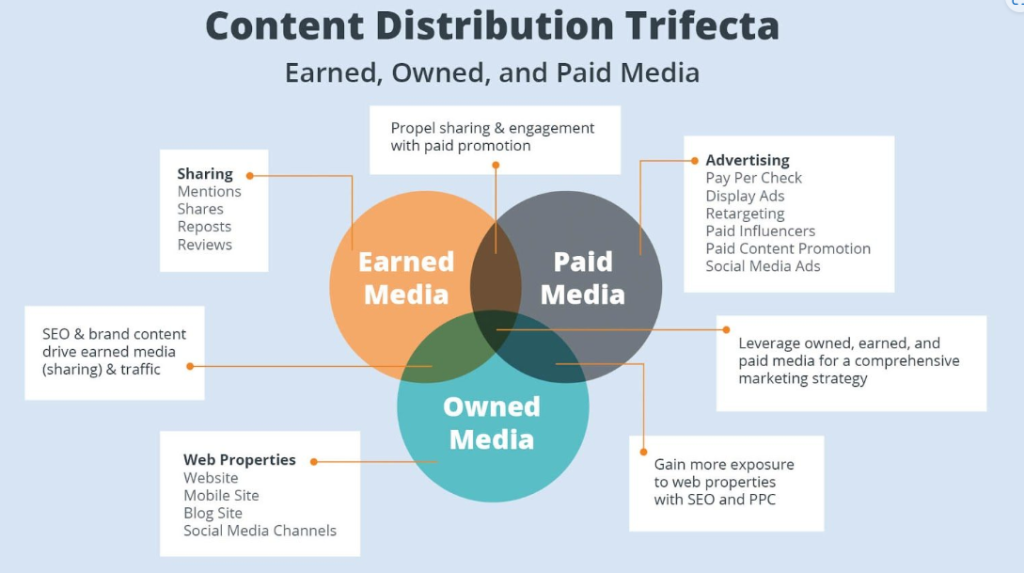
(Source – Instapage)
When developing a content distribution plan, consider the entire content lifecycle, encompassing blog posts, videos, podcasts, infographics, and white papers. A healthy mix of formats keeps your audience engaged and allows you to repurpose core ideas across different channels. Having different types of content extends the value of every piece you produce.
Measurement & KPIs
How will you know if your content is successful? You need to define your Key Performance Indicators (KPIs) from the start. KPIs are the only way to track your progress and justify your investment.
It can be rather challenging to find the right KPIs for your content. There are many to potentially add. I find it odd that, for something as important as measuring KPIs, marketers have struggled to find a return on marketing investment for as long as the practice has existed.
To be successful with identifying KPIs to track, start small. Try leveraging the following KPIs listed below:
- Organic Traffic Growth – Monitor the number of visitors coming to your content through search engines like Google and Bing.
- Conversion Rate – Track the percentage of your content’s visitors who complete desired actions (newsletter signups, downloads, purchases).
- Average Time on Page – Measure how long visitors spend engaging with your content to assess content quality, relevance, and ability to hold audience attention
- Lead Generation Volume – Count the number of qualified leads generated through your content.
- Content Engagement Rate – Calculate the ratio of your website’s visitor interactions (likes, comments, shares, clicks).
Once you have your KPIs ready, make sure they align with your primary business goals. If your goal is brand awareness, track metrics like organic traffic and social reach. If you focus on lead generation, then measure form conversions and email signups.
Exploring Popular Content Strategy Model Frameworks
Once you have your core components, you can choose a framework to organize them all. You don’t have to invent a system from scratch. Several proven models can give you a great starting point.
Each model offers a different way to think about your content. The right one for you depends on your specific goals and resources. Let’s look at a few of the most popular options.
The Hub and Spoke Model
This model is amazing for building topical authority and improving your SEO. It works by creating one large, central piece of “hub” content on a broad topic. A central hub is usually a comprehensive guide or a resource-filled pillar page.
Then, you create several smaller “spoke” pieces of content. These focus on more specific subtopics related to the hub. Each spoke links back to the central hub, passing authority to it through a strong internal linking structure.
For example, your hub could be “A Beginner’s Guide to Digital Marketing.” Your spokes could be separate articles on “What is SEO?,” “How to Use Social Media for Business,” and “An Introduction to Email Marketing.” Each spoke creates a clean, organized content library for users and search engines.
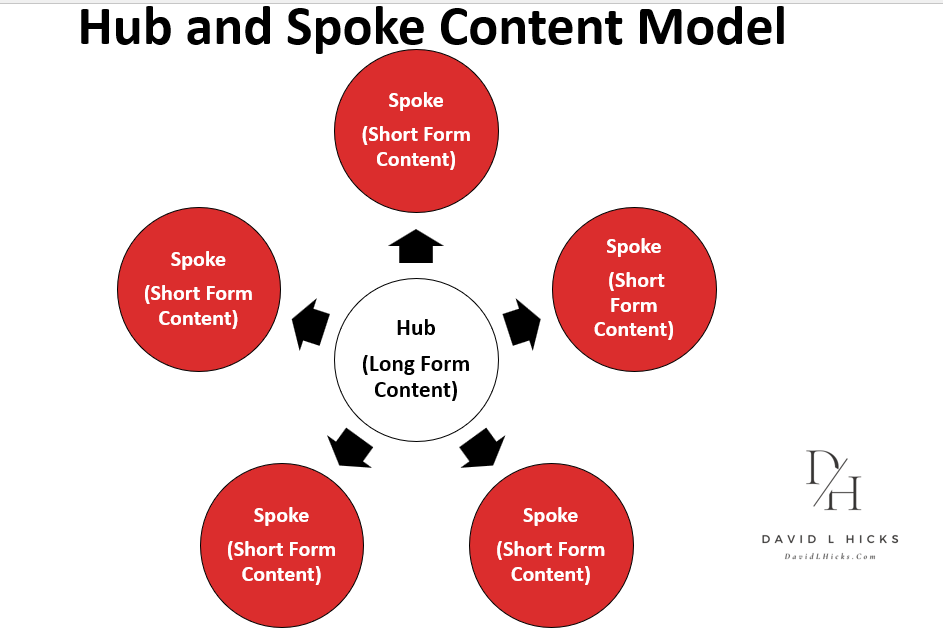
The Hero, Hub, Help Framework
Initially developed by YouTube, this framework helps you plan content across different levels of engagement. The framework’s purpose is to attract a broad audience while still serving your loyal followers. It breaks down into three types of content.
Hero content is your big-splash moment. Think of a high-budget video or an extensive campaign intended to reach a massive new audience. These resource-intensive projects do not happen often.
Hub content is your regularly scheduled programming for your core audience. The content keeps your subscribers coming back, like a weekly blog series or podcast. Help content is your always-on, evergreen content that answers common questions your audience is searching for, as Google’s own guide explains. Evergreen content acts as your foundation for consistent search traffic.

The Content Marketing Funnel (TOFU, MOFU, BOFU)
This model aligns your content with the customer’s journey. It recognizes that people require different information at various stages of their purchasing process. The funnel has three main parts that guide the customer from awareness to decision.
Top of the Funnel (TOFU) is the awareness stage. Here, your content should address problems and answer questions without being salesy.

Middle of the Funnel (MOFU) is the consideration stage, where individuals recognize they have a problem and are actively seeking solutions.
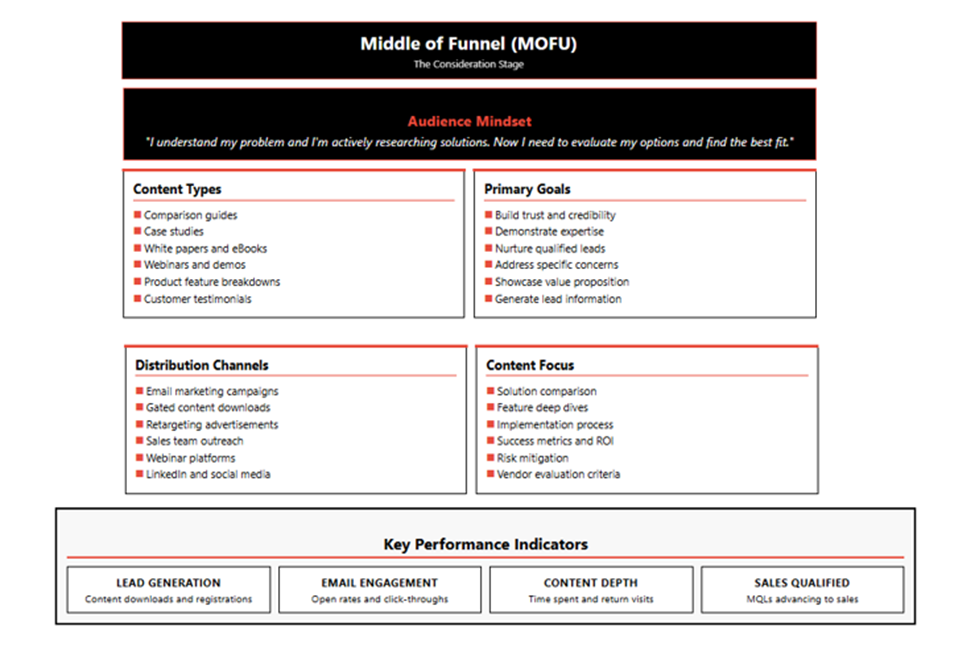
Bottom of the Funnel (BOFU) is the decision stage. At this point, they are ready to buy, and your content should help them choose your product or service. This model directly connects content creation to revenue generation.
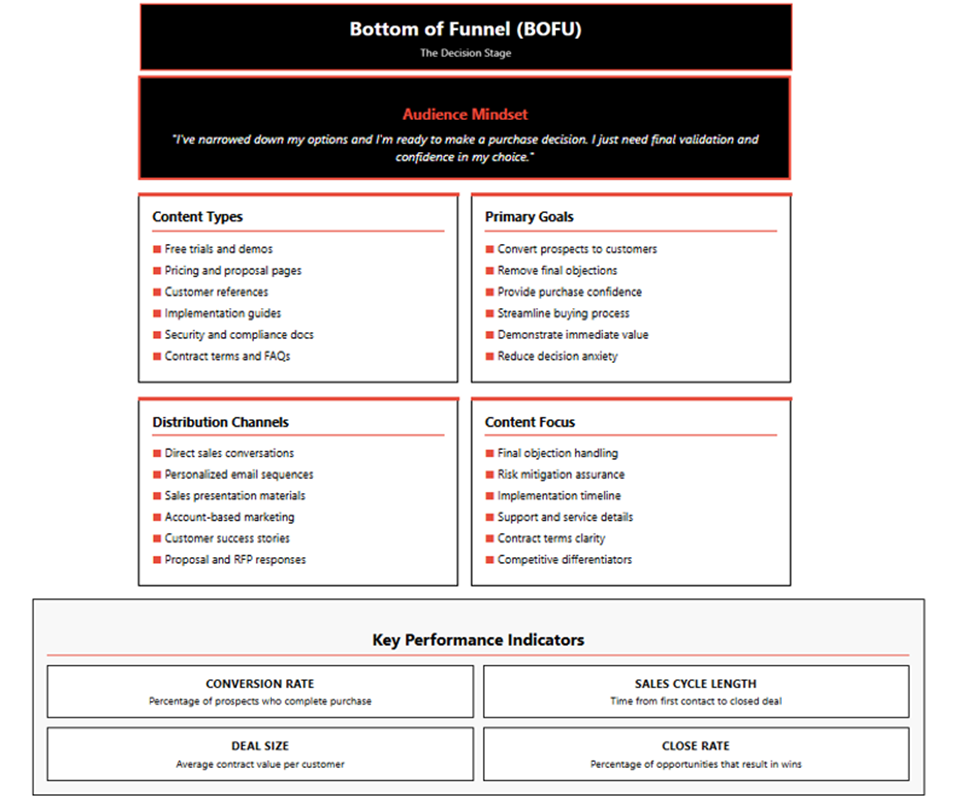
To help you develop a content funnel here is an explanation showing some core aspects for each funnel stage:
| Funnel Stage | User Mindset | Goal | Content Examples |
|---|---|---|---|
| Top (TOFU) | “I have a problem, but I don’t know what it’s called.” | Build Awareness | Blog Posts, Infographics, Social Media Updates. |
| Middle (MOFU) | “I know what my problem is and I’m researching solutions.” | Generate Leads | Case Studies, eBooks, Webinars. |
| Bottom (BOFU) | “I’m ready to choose a solution and make a purchase.” | Drive Sales | Free Trials, Demos, Consultations. |
How to Build Your Own Content Strategy Model
Now it’s time to put all this information into action. Building your own content strategy model is a step-by-step process. It takes some upfront work, but the effort pays off massively in the long run.
1. Define Your “Why”
Start with your business goals. What do you need your content to achieve? Is it to increase website traffic, generate more sales leads, or build brand loyalty? Your goals will influence every other decision you make. Be specific and make your goals measurable using a framework like SMART (Specific, Measurable, Achievable, Relevant, Time-based). An example goal might be “Increase organic blog traffic by 20% in the next quarter.”

(Source – Notejoy)
2. Know Your Audience
You already created your audience persona. Now, dig even deeper. Where does your audience’s information come from, what social media platforms do they use, and what kind of content do they prefer? Use surveys, interviews, and analytics data to get a clear picture of who you are trying to reach. The better you understand your audience, the better you can serve them with valuable content. Valuable content is the foundation of effective content marketing.
3. Conduct a Content Audit
Look at all the content you have already published. A content audit helps you see what you have, what is performing well, and what is falling flat. This process reveals important gaps in your current strategy. It’s an essential step for figuring out what you should create more of. A solid content audit process, like the one outlined by Moz, can guide you through it. You can also identify old content to update and republish for a quick win.
4. Choose Your Framework
Review the models we discussed. Which one aligns best with your goals and resources? The Hub-and-Spoke model is great for SEO, while the Funnel model is perfect for businesses focused on lead generation. You can even combine elements from different models. For instance, you could use the Hub-and-Spoke model to structure your blog content while applying the Funnel model to your overall marketing campaigns. The goal is to create a structure that works for your team.
5. Plan Your Workflow
How will you get content from an idea to a published piece? Document your content creation process and establish a content governance framework. Who is responsible for writing, editing, designing, and publishing? An editorial calendar is essential here. It helps you plan your content and maintain a consistent approach. Tools like Trello, Asana, or a simple spreadsheet can help manage this workflow and keep everyone accountable.
6. Distribute and Promote
As I’ve stated in prior articles, hitting “publish” is not the last step. You need a content distribution plan to get your content in front of your audience. How will you promote each piece? Promoting content can include sharing on social media, sending it to your email list, or doing outreach to other websites. Don’t let your great content die because no one sees it. Promotion is just as important as creation.
7. Measure, Analyze, Repeat
Refer back to the KPIs you set in the beginning. Regularly review your analytics to monitor your content’s performance. What is driving traffic, engagement, and conversions? Use this data to refine your strategy over time. Content strategy is not a one-time project. It is an ongoing process of learning, adapting, and improving based on real-world feedback and results.
Conclusion
Moving from random acts of content to a structured system is a game-changer. It replaces chaos with clarity and guessing with purpose. A strong content strategy model is the foundation for creating content that actually helps you achieve your business goals.
Your plan is not set in stone. Your business and your audience will change over time. Treat your content strategy model as a living document, ready to be adjusted as you learn what truly connects with people.